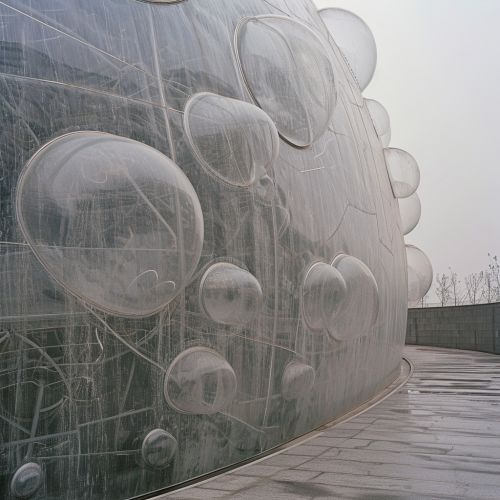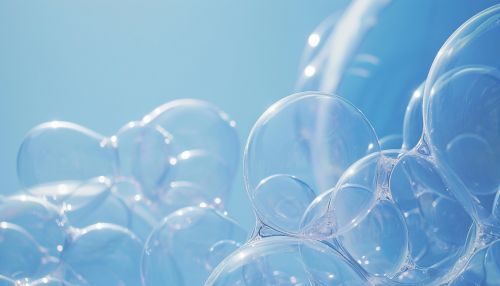Water Cube
Overview
The Water Cube is a renowned architectural marvel, officially known as the Beijing National Aquatics Center. It is a prominent symbol of the 2008 Summer Olympics, held in Beijing, China. The Water Cube's innovative design and construction have made it a landmark in modern architecture and engineering. It is an excellent example of the application of biomimicry in architecture, as its design was inspired by the structure of soap bubbles.
Design and Construction
The Water Cube's design was the result of a global competition, won by the consortium of PTW Architects, Arup international engineering group, and the China State Construction Engineering Corporation. The design was inspired by the natural formation of soap bubbles, which led to the creation of the building's unique and visually striking "bubble" facade.
The structure of the Water Cube is based on the Weaire-Phelan geometry, a structure representing an idealized foam of equal-sized bubbles. This structure was used to form the building's steel frame, which was then filled with ETFE (Ethylene Tetrafluoroethylene) "bubbles" to create the building's distinctive appearance.


Use and Function
The Water Cube was primarily built to host the swimming, diving, and synchronized swimming events of the 2008 Summer Olympics. It has a seating capacity of 17,000 for competition events. The building includes a competition pool, a warm-up pool, and a diving pool.
After the Olympics, the Water Cube was transformed into a multi-functional facility for sports, culture, and leisure activities. It now houses a water park, a wellness center, and various sports facilities. It continues to host national and international swimming and diving competitions.
Legacy and Impact
The Water Cube is not just a symbol of the 2008 Beijing Olympics, but also a testament to the advances in architectural design and engineering. Its innovative use of materials, particularly ETFE, has influenced the design of other buildings around the world.
The Water Cube also stands as an example of sustainable design. It utilizes solar energy to heat the pools and the interior of the building, and its ETFE facade allows for natural light to illuminate the interior, reducing the need for artificial lighting.
